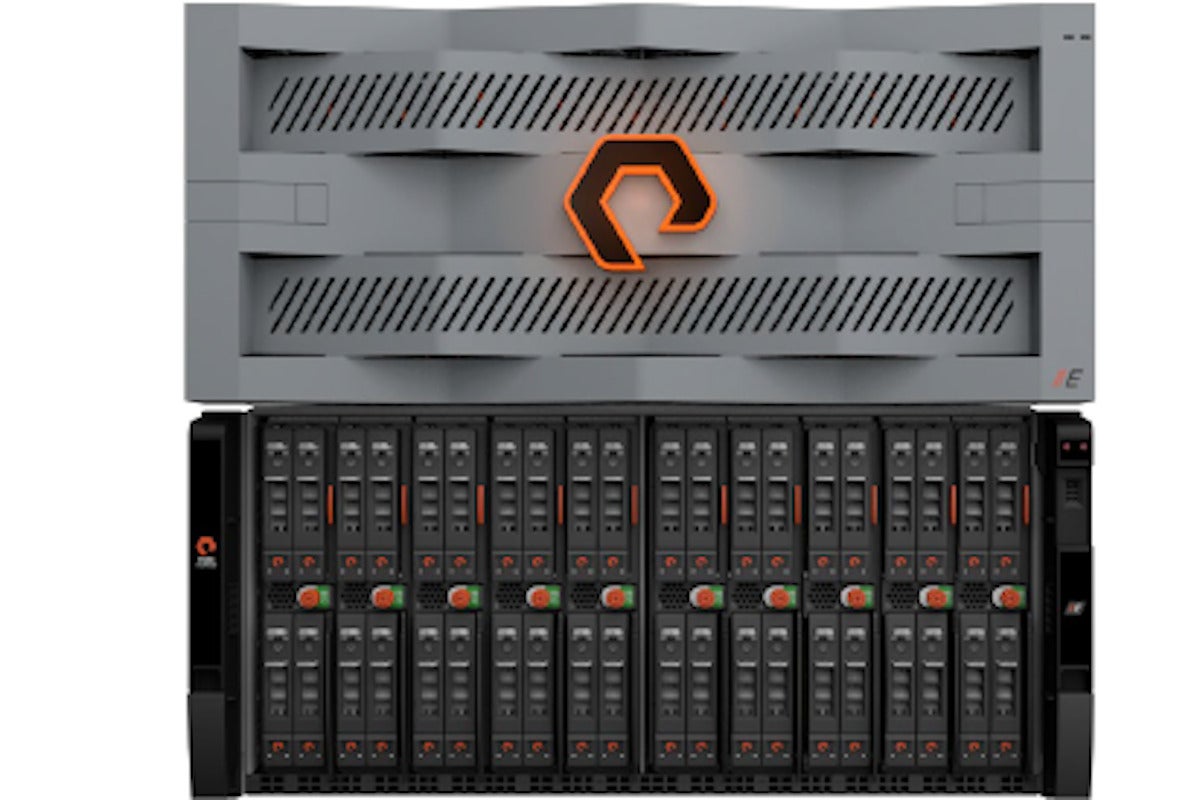Pure Storage debuts denser blade-based flash storage system

Flash-based storage vendor Pure Storage is targeting companies using disk-based mass storage market with a new model of blade server, dubbed FlashBlade E, that provides lower price points for petabyte-scale systems thanks to a tweak to the company’s FlashBlade architecture.
Pure Storage’s existing FlashBlade S system is designed for performance – each blade in the 5U chassis of the system has built-in compute and networking, which are interconnected and combined into a single namespace for ease of use. (Multiple chassis can be connected together and will work similarly via an external fabric module, or XFM.)
That’s great for high-performance computing (HPC) and other applications that need particularly high performance, but Pure Storage wants to bring its all-flash approach to the world of unstructured storage, where spinning discs are still widely used.
FlashBlade E introduces all-storage chassis
To that end, FlashBlade E introduces all-storage chassis — while the system still requires the use of a compute/storage unit for management, less-expensive storage-only units can be added to the rack for denser storage at a lower price point.
“So, as we evolve, the combination of head chassis and expansion chassis could change depending on the density of the flash modules,” said Pure Storage vice president of product management Ravjiev Rajavisreddy. “The density of disks is a lot lower than what we’re able to offer.”
The basic FlashBlade E system includes one EC chassis (which mixes compute and storage) and one storage-only EX chassis, as well as two XFM modules. Each chassis takes up 5U of rack space, while each XFM takes up one, with up to 16x100GbE connectivity. Such a system provides 4 petabytes of storage space, which can be expanded with additional chassis, to drive the basic $0.20 per gigabyte cost lower. (Hence, the base system costs around $800,000.)
Pure Storage couldn’t confirm precise costs for each additional EX module, and said that the product will be priced on an all-in basis, with customers providing their particular storage needs, rather than simply buying a given number of EC or EX chassis a la carte.
“We have a sizing tool where you enter the storage you need and we figure out how many control chassis you need,” Rajavisreddy said.
More details on pricing will be available in mid-to-late March, he noted, and FlashBlade E is set to reach general availability by the end of April.
Copyright © 2023 IDG Communications, Inc.

